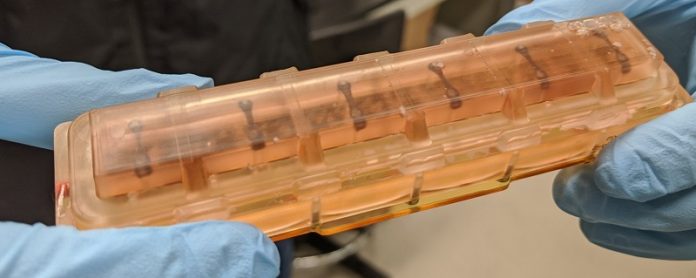
Scientists at Johns Hopkins Medicine have discovered that low gravity in space can weaken and disrupt the normal rhythm of heart muscle cells.
In a recent study, 48 samples of human-engineered heart tissue were sent to the International Space Station (ISS) for 30 days.
The results showed that the heart tissues in space became weaker and developed irregular beating patterns compared to similar samples kept on Earth.
The research, published in the Proceedings of the National Academy of Sciences, provides important insights into how long-term space travel might affect astronauts’ health, particularly their heart function.
These findings could also help scientists understand heart aging and develop new treatments for heart diseases on Earth.
Previous studies have shown that some astronauts return from space with heart-related problems, such as reduced heart muscle function and irregular heartbeats (arrhythmias).
However, scientists wanted to study these effects more closely at the cellular level to find ways to protect astronauts during long missions in space.
Dr. Deok-Ho Kim, a professor of biomedical engineering and medicine at Johns Hopkins University, led the project.
The team used human-induced pluripotent stem cells (iPSCs) to create heart muscle cells, known as cardiomyocytes.
These cells were placed in a bioengineered tissue chip that mimics the environment of a human heart, allowing researchers to study how the tissues contract and function.
In March 2020, the heart tissue samples were sent to the ISS aboard the SpaceX CRS-20 mission. For 30 days, the scientists received real-time data on how the tissues were behaving in space.
Astronaut Jessica Meir monitored the tissues, providing nutrients and preserving samples for later analysis.
The results were concerning. The heart tissues in space lost about half of their strength compared to the Earth-bound samples.
They also developed irregular beating patterns, with the time between beats growing nearly five times longer than normal.
This irregularity, known as arrhythmia, can lead to heart failure in humans. Fortunately, when the tissues returned to Earth, their beating patterns nearly returned to normal.
Further analysis revealed that the sarcomeres—protein structures in muscle cells that help them contract—became shorter and more disordered in the space-exposed tissues, which is a sign of heart disease. Additionally, the mitochondria, which produce energy for cells, became larger, rounder, and less efficient in space.
The study also found that genes related to inflammation and oxidative damage, both markers of heart disease, were more active in the space-exposed tissues. These changes mirror the health issues often seen in astronauts after they return from space.
To explore potential solutions, Dr. Kim’s lab has sent another batch of heart tissues to the ISS in 2023. This time, they are testing drugs that could protect heart cells from the damaging effects of low gravity. These drugs might also help people on Earth maintain healthy heart function as they age.
The team continues to refine their “tissue on a chip” system and is studying the effects of space radiation on heart tissues, as the ISS is shielded from most space radiation by Earth’s magnetic field. This research is crucial for ensuring the health and safety of astronauts on long space missions and could lead to new treatments for heart conditions on Earth.
If you care about heart health, please read studies about how vitamin D influences cholesterol levels, and what we know about egg intake and heart disease.
For more health information, please see recent studies about best supplements for heart disease prevention, and wild blueberries can benefit your heart and brain.



